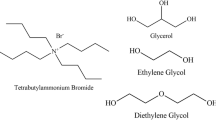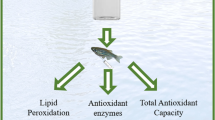Abstract
Glycol ethers belong to a group of solvents with a wide spectrum of applications, particularly because of their compatibility to both hydrophilic and lipophilic systems. Especially ethylene glycol monobutyl ether (2-butoxy ethanol, BE) is widely used as a key ingredient in many industrial and consumer cleaning products. From cases of acute BE intoxication in humans it is known that it causes severe toxicity, including coma, metabolic acidosis, hypokalemia and hemoglobinuria. It is currently unknown whether the toxicity is related to BE itself or its oxidation products, butoxyacetaldehyde (BAL) and butoxyacetic acid (BAA). By use of an established kidney epithelial cell line from the proximal tubule (opossum kidney cells), the effects of BE, BAL and BAA on cell viability and the organization of the intracellular cytoskeleton of the cells were investigated and combined with gas chromatographic and mass spectrometric determinations. The experiments were performed with (i) freshly used BE, (ii) BE that had been stored at room temperature for 3 months after use in the original packing and containing 0.5% BAL, (iii) BAL with a purity of 73.5% after catalytic oxidative dehydration of BE with a heated copper meshwork, and (iv) BAA as the final oxidation product of BE. Kidney epithelial cells were unable to oxidize BE via BAL to BAA directly, but formation of BAA after the addition of BAL was observed with a turnover rate of approximately 45%. The tests for cytotoxicity showed no acute toxic effect for freshly used BE and BAA, whereas stored BE containing 0.5% BAL and synthesized BAL caused a dose-dependent decrease of viable cells within 24 h. The EC50 (i.e. the concentration causing a 50% loss in cell viability) was 1 mg/mL for stored BE and 15 μg/mL for BAL. Calculations taking the actual BAL content of stored BE and BAL into account demonstrated that the cytotoxic effects seem to be mainly related to BAL and not to by-products such as butyraldehyde or n-butanol. In accordance with the tests for cytotoxicity were the cytoskeletal alterations of the three-dimensional stress fiber network. Stored BE and synthesized BAL caused a disruption and/or depolymerization of the stress fiber network which points to massive alterations of the intracellular ional milieu. The present study provides evidence that BE and BAA possess only a minor toxic potential, whereas BAL as the corresponding reactive intermediate has marked toxic effects. Thus, the aldehyde might be responsible for the toxic effects observed in studies in vitro and after human intoxication.
Similar content being viewed by others
Author information
Authors and Affiliations
Rights and permissions
About this article
Cite this article
Dartsch, P., Hildenbrand, S., Gfrörer, W. et al. Cytotoxicity of 2-butoxyethanol and its oxidation products in vitro. Int Arch Occup Environ Health 72 (Suppl 3), M057–M061 (1999). https://doi.org/10.1007/PL00014203
Issue Date:
DOI: https://doi.org/10.1007/PL00014203




